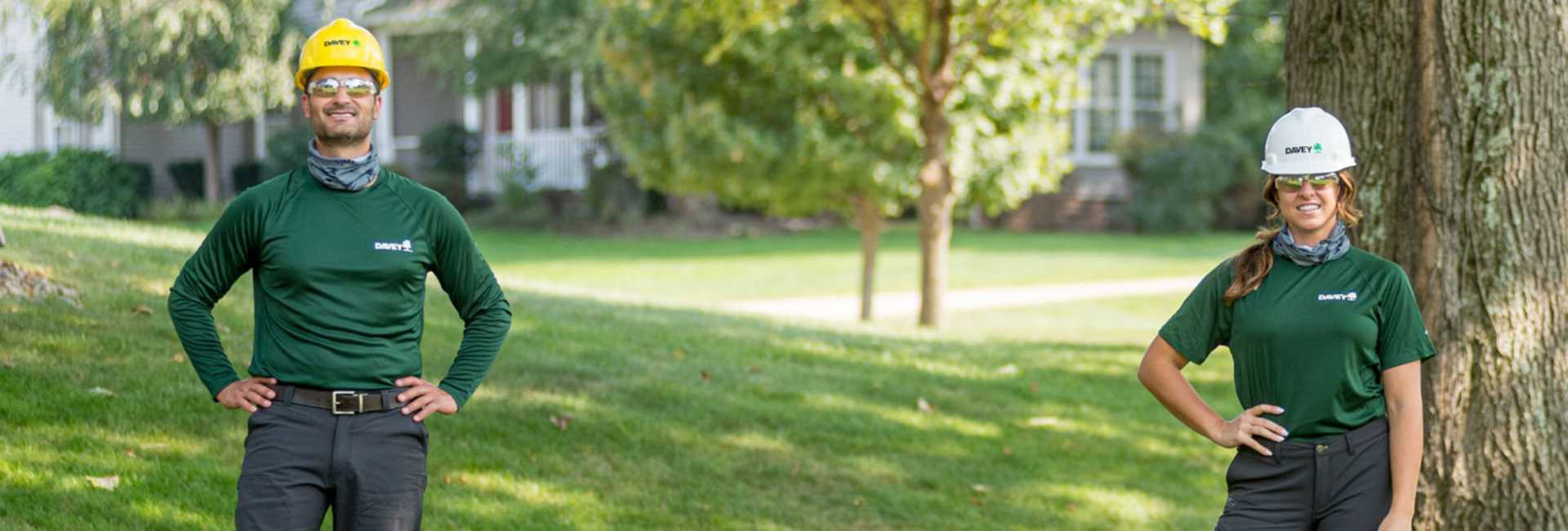When you spot a ginkgo biloba tree, you’re actually looking at one of the world’s oldest living tree species.
In fact, this species of tree first appeared approximately 290 million years ago. A 2020 study done in China showed ginkgo trees up to 667 years old, displayed little effects of aging.
This Chinese tree is known for its fan-shaped leaves and ability to tolerate heat, air pollution, deer, and salt exposure, making it a great tree for urban areas, streetscapes, recreational spots, and even walkways.
If you think you have a ginkgo tree in your home landscape or maybe you want to add one to your yard? Let’s look at some fun facts about ginkgo trees, as well as how you can spot their unique characteristics and keep them healthy and thriving all year long.
How To Identify A Ginkgo Biloba Tree
A ginkgo tree can certainly stand out in your home landscape.
Growing best in U.S. Hardiness Zones 3 to 8, this tree’s distinct characteristics and attractive shape make it both a great shade and ornamental tree, adding a nice canopy and a visually interesting specimen to a space.
Pyramidal in shape with normally one central trunk, the ginkgo can grow between 25 and 50 feet in height with a 25- to 35-foot spread, depending on the species. Its bark is usually gray and can be deeply furrowed as the tree ages.
Ginkgo Tree Leaves
The ginkgo tree leaf is what really makes this tree stand out.
This distinctive leaf is two-lobed, fan-shaped, and roughly 2 to 3 inches long and wide. In fact, the part of the name “biloba” means two-lobed, referring to the tree’s leaves. In spring and summer, leaves are rich green in color, and in fall, the show is stunning with golden leaves gracing the full ground.
In fact, some people call ginkgo trees maidenhair trees since the leaves resemble the fan-shaped leaves of the maidenhair fern.
Ginkgo Tree Facts
Among trees, the ginkgo biloba tree actually has some interesting history and facts that surround it.
Some people call the ginkgo biloba “the tree that outlived the dinosaurs” because it dates back to before they roamed the earth. Others call it a “living fossil” because fossils of ginkgo leaves have been found dating back more than 170 million years.
The ginkgo has become a symbol of strength and hope because of its history. In fact, several ginkgo that stood near the detonation site of the atomic bomb that hit Hiroshima, Japan, in 1945 survived the blast and are still standing today.
Ginkgo Tree Care and Characteristics
Let’s look at some of the ginkgo tree’s unique characteristics and care considerations.
- Grow zones: The ginkgo tree grows well in U.S. Hardiness Zones 3 to 8.
- Bloom: Ginkgo trees bloom in spring with green flowers that have a pleasant aroma.
- Height/spread: The ginkgo tree can grow to a height of 25 to 50 feet with a 25- to 35- foot spread at maturity.
- Sunlight: This tree likes partial shade, which means it prefers a minimum of four hours of direct sunlight.
- Water: While ginkgo is tolerant of drought, it prefers moist soil.
Potential Threats
While ginkgo biloba trees are resistant to many diseases and pests, there are a few you should watch out for.
If you choose to plant it near the street, there have been reports of abiotic leaf scorch due to high heat and drought stress. Proper irrigation can help alleviate this issue.
Bacterial leaf scorch can also impact weak ginkgo trees. This is caused by the Xylella fastidiosa bacterium, which can be transmitted by leafhopper insects. Bacterial leaf scorch can lead to decline and even death. Prevent this issue by properly caring for your ginkgo and having a certified arborist regularly inspect your tree to ensure its good health.







